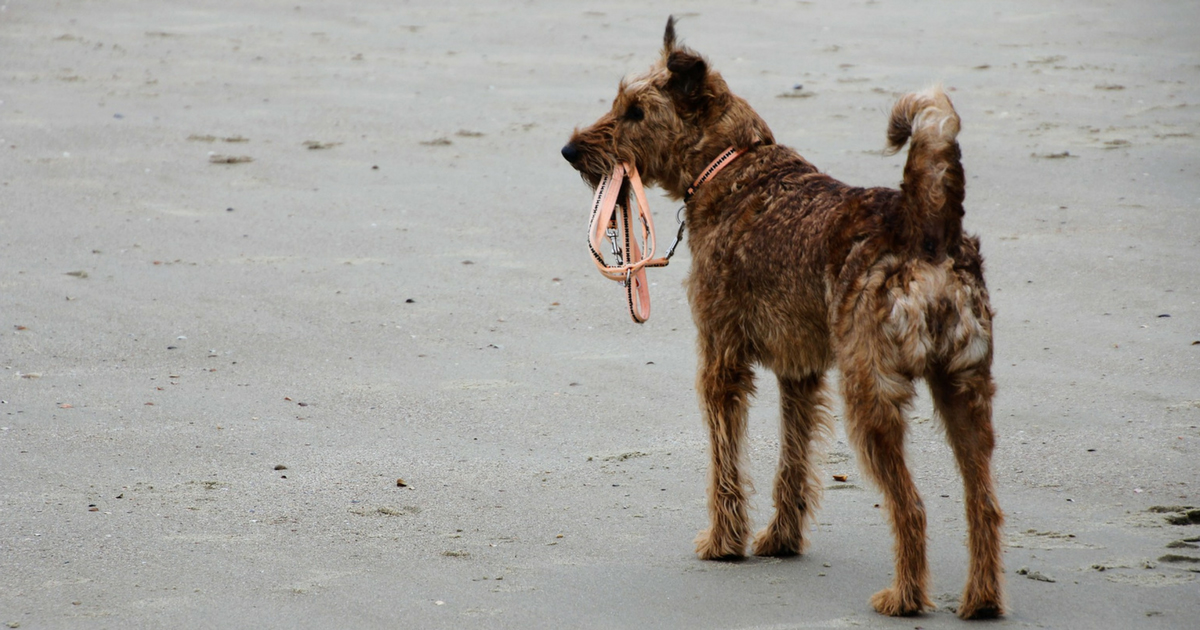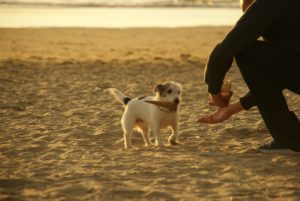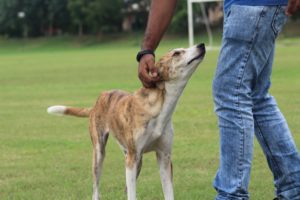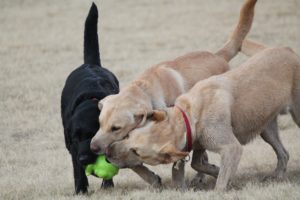
Is Your Dog Ready For Off-Leash?
A lot of time and effort goes into training your dog. It is no small feat to have a dog who can sit, stay, come, and do other tricks. But is your dog ready for off-leash? Letting your dog off-leash is a whole other type of trust that we put onto our dogs. We are expecting them to go off on their own and not get in to trouble, returning when we call them back. So, how do you know if your dog is ready for off-leash? Here is what you need to know to determine if your dog is ready to be un-clipped and released into the world.
Recall

The most crucial factor that you need to consider before letting your dog off of the leash is how good his recall is. Recall is your dog’s ability to come back when summoned. This does not mean that your dog has to come only when his name is called. When training, it may require a bribe to bring him back. If your dog comes running to you when you show him a treat, or bring out his favorite toy, that works just as well! To know if your dog is ready to be off-leash, you need to know that he will return.
Before you unhook the lead, ask yourself this question: “Does my dog recall amongst distractions?” It is one thing for your dog to come to you when you are at home or in the backyard – but when out in the world filled with distractions, your dog’s recall may not be as good. When training your dog, take him to new and exciting places. Keep the lead on and recall him (also a great time to practice sit and stay!). If he runs off in the opposite direction, you will have to practice more often. Start with few distractions and slowly make your way up to a busy environment.
Responds to Name

New dogs will take time to learn their name. When you first get a puppy, or adopt an older dog and change their name, they will need time to comprehend the word you are saying (ex: “Fido”)! This is something that your dog will adapt to quickly as you begin to make him aware of his name. One method commonly used in puppy training classes is to play the looking game. Have a handful of treats nearby and stand near your dog. When you say his name, wait for him to look at you – once he does, hand him a treat. Doing this over and over will help your dog understand that the word you are saying requires attention!
Attention Span

Some dogs (especially those of younger ages), may struggle with staying focused. It is one of the toughest things to train a dog – staying focused on you. The attention span of your dog goes hand-in-hand with whether or not he has good manners (see next point!). Once you let your dog off-leash you need to trust that he will come back to you, but also that he will stay close by. If your dog is easily distracted, he may go off chasing a rabbit, a blowing leaf, or a bird. In your training sessions, work on having him focus on you by playing the name-looking game. Play this training game in distracting places such as a local park, a nearby forest, or downtown (of course, be sure to keep your dog on the leash while training!). Once you know that your dog will listen to your command instead of chasing something far away, then you know that you are one step closer to off-leash!
Good Manners

There is nothing worse than having to worry about your dog running up and jumping on people. If your dog is off-leash you want to ensure that he will have good manners. Your dog knows to sit and wait to be pet, to not jump up, and especially not to bite or nip. You do not want to have a lawsuit on your hands, so if your dog suffers from poor manners, consider joining a training class that will work to create good manners instead!
Good with Other Animals

No matter what age your dog is, you must consider his interactions with other animals. Off-leash parks are filled with other dogs who are there to run around and play. If your dog is very skittish and fearful, immersing him into a park where dogs can come up to him may be intimidating. Before letting your dog off-leash at the dog park, instead find a friend or neighbour with a dog and slowly socialize him. The more exposure he has to other dogs, the more likely he will feel comfortable at the dog park.
If your dog is more aggressive in nature, consider working on appropriate socializing behaviour before letting him roam free. You do not want your dog to cause problems with other dogs. Work with your dog and introduce him to other pets and be nearby to make sure he is playing appropriately. If you are unsure if your dog is causing problems for other animals, watch his body language for signs (tail between legs, yelping, running away panicked, or bared teeth).
If your dog meets the standards in all of these areas, you know that it is time for the leash to be unhooked! You can trust your dog to return, play nice, and behave while running free. If you are still unsure about letting your dog off-leash, look for local dog parks that are fenced in. This will reduce your stress and give your dog a safe and fun place to play!
